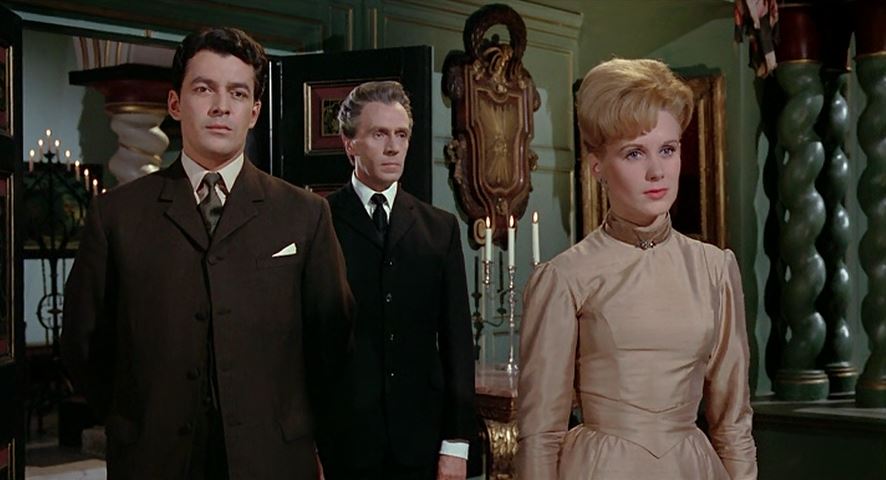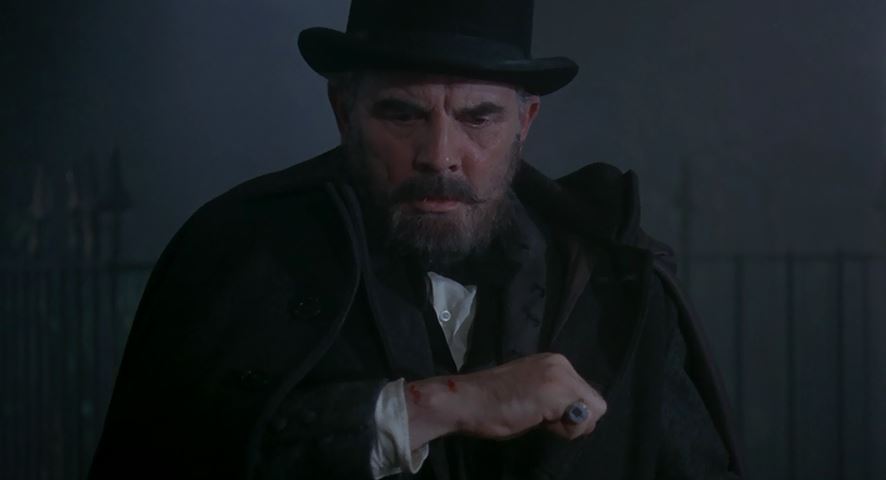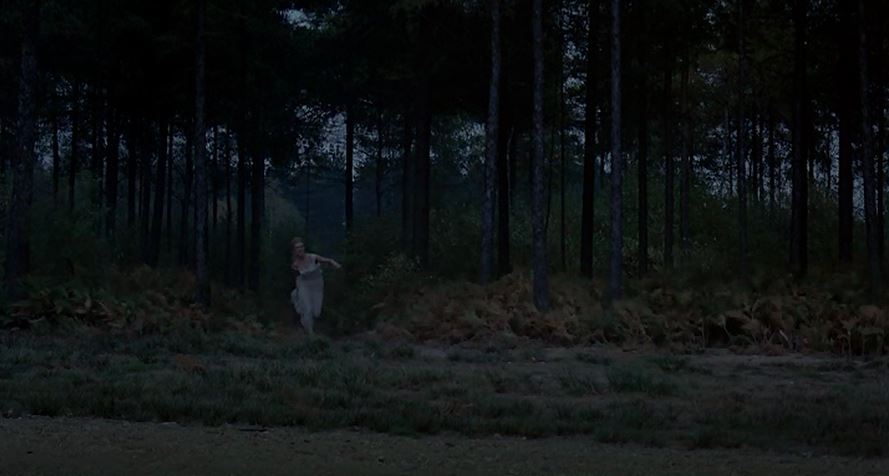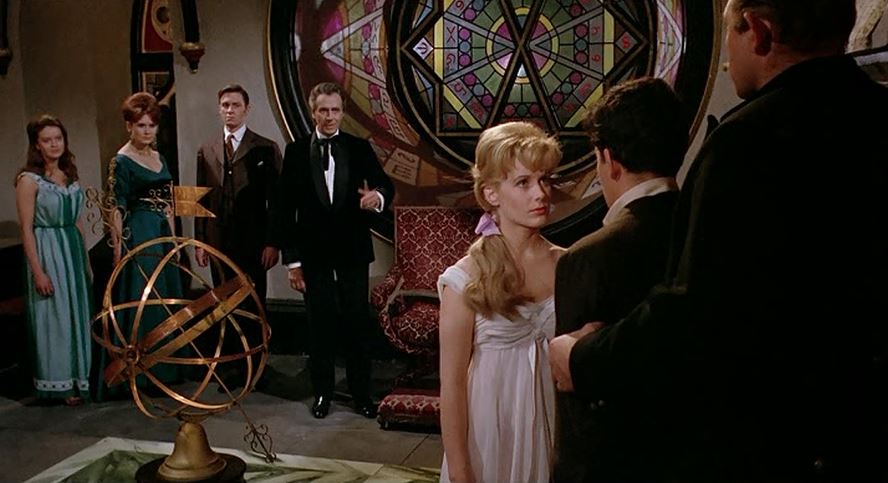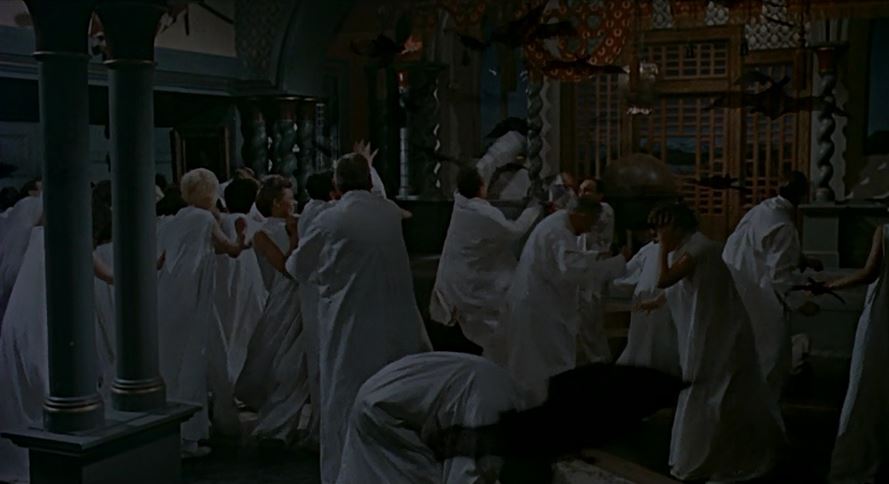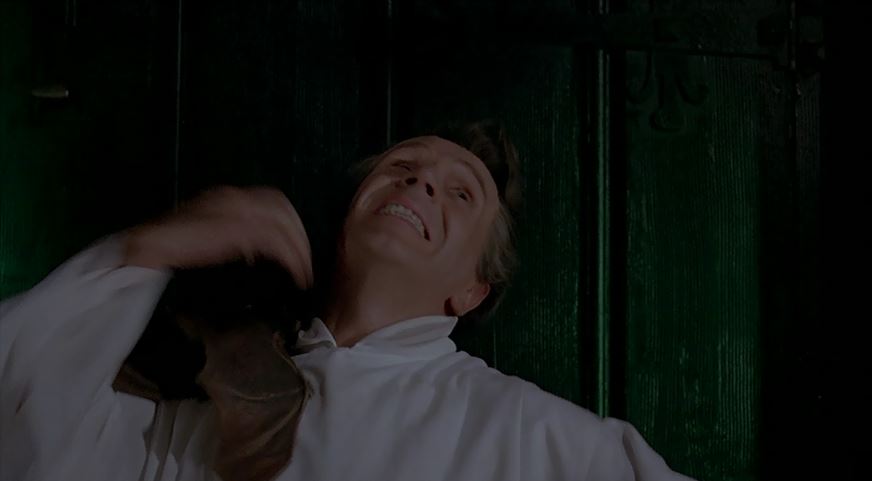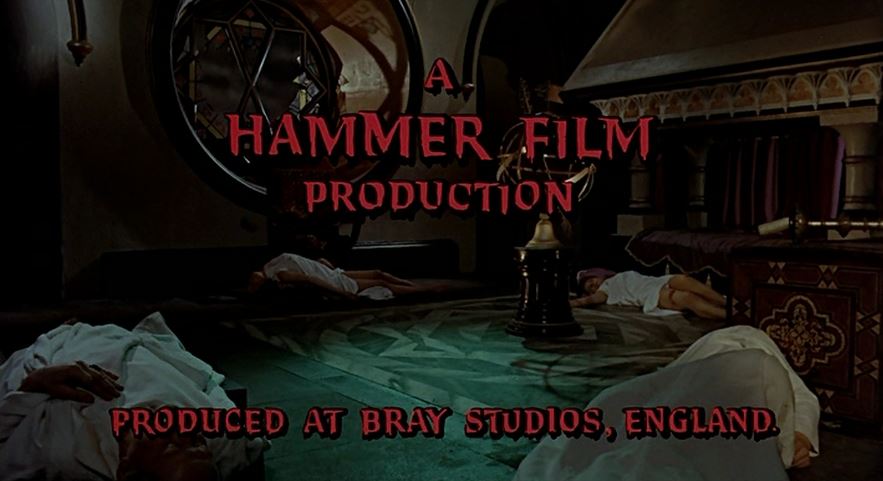Starring Clifford Evans, Noel Willman, Isobel Black and Jennifer Daniel, and directed by Don Sharp, The Kiss of the Vampire (aka Kiss of Evil) doesn’t come into its own until the last ten minutes. To gather what the intention behind this picture is, you’re best to imagine yourself back to the fleapits of the 1960s and then delve further into the minds of the expectant viewers. The Kiss of the Vampire is a measure of the level of expectation when it came to British horror cinema in the years of the 1960s.
The Kiss of the Vampire wasn’t any part of the celebrated Hammer Dracula sequence, but tells of as cult of vampires who are a fairly normal random creepy family by day, who only grow their fangs at night. Lurking beneath the lid is an vulgar old Victorian sackful of themes — the links between pagan rituals and the potential-releasing glories of primitive orgies, when contrasted against British sexual repression — something fairly common in Hammer films of the day.
Context turns out to be a significant factor in attempting to enjoy many of the period's Hammer films. When considering the idea of the horror movie, some of us wish only to see films that are scary or gory, and so a flick like The Kiss of the Vampire is not going to satisfy. Others seek something more psychological, or even historical, but The Kiss of the Vampire doesn’t pull its weight there either. This is largely down to the fact that the writers of Hammer films often created analogues based on their own horror reading, which was largely influenced by MR James. Although Britain hadn’t quite realised it yet, there was another type of horror just around the corner, and pounding over the sea from America — and weirder things still going on in Europe, for example with the arrival of Jess Franco.
It means that The Kiss of the Vampire is an extended essay in mood. The logic of these and other unscary Hammer movies is an attempt to create a slow and creepy atmosphere that went out in about 1930, and the tools with which this are attempted are usually just a few gothic pillars and rustling leaves, both of which feature in the worls of the better known British horror writers of the early century. Even Dennis Wheatley, whose writing also influenced the Hammer studios — even he did not deal in the ‘real’ horror or psycho killers, or the psychedelic stuff of viciously bad dreams. And watching The Kiss of the Vampire is a little like reading a Dennis Wheatley novel. If you are ever bored enough to take on a Wheatley novel, you'll see it for yourself. You sometimes even get the sense with Wheatley that he is too scared to go all the way, choosing instead to skirt around the bad stuff, making his books more like thrillers with gothic or ghastly elements. Not horror though!
Atmosphere in The Kiss of the Vampire (1963)
Hammer weren’t exactly horror innovators, not in terms of content at least. The speedy production and the rote scripts, with the same themes and the same music, played out well for a decade and half, during which there were many highs and lows, although we can assume the studio kept running thanks largely to a grateful British cinema audience, who didn’t want to be too scared, but enjoyed the idea of the 'horror film' nonetheless.
If you take a look at Hammer films over their course, you begin to realise some things. First, you see that Hammer tried a good many salacious themes, and that most of these worked at least once or twice, enough to merit short series of films, but overall there is a British and Victorian theme to the collection. If you take the many films they made on the themes of Jack the Ripper, pirates and Robin Hood, you can almost see a grisly British education evolving in and of itself.
On top of that was Hammer's own gothic take on the horror classics of Dracula, Frankenstein and the Mummy, which they played relentlessly, stopping only now and then to have enormous hits like The Quatermass Xperiment (1954). Film production ended ignobly for Hammer with the rather awful On the Buses films, which appear to be trying to rival the Carry-On series in their grossness, filled as they were with working class nightmares (and fantasies), including the guignol of a boss and the central character’s horrific wife. I used to watch these as a kid and I wondered why the lead Reg Varney ever married Olive, played by Anna Karen, when he disliked her so much.
The climax of The Kiss of the Vampire is decent
During their years of domination, Hammer made many different series and styles of films which could be classed thus:
Dick Barton — Dick Barton, Special Agent (1947); Dick Barton at Bay (1948); Dick Barton Strikes Back (1948)
P.C. 49 — The Adventures of PC 49 (1948); A Case for P.C. 49 (1951)
Jack the Ripper — Room to Let (1949); Hands of the Ripper (1971)
The Lyons — Life with the Lyons (1953); The Lyons in Paris (1954)
Robin Hood — Men of Sherwood Forest (1954); Sword of Sherwood Forest (1960); A Challenge for Robin Hood (1967); Wolfshead: The Legend of Robin Hood (1969)
Quatermass — The Quatermass Xperiment (1954); Quatermass 2 (1956); Quatermass and the Pit (1967)
Blood Island — The Camp on Blood Island (1957); The Secret of Blood Island (1964)
Random WW2 dramas — The Steel Bayonet (1956); Ten Seconds to Hell (1958); Yesterday’s Enemy (1959)
Frankenstein — The Curse of Frankenstein (1956); The Revenge of Frankenstein (1958); The Evil of Frankenstein (1963); Frankenstein Created Woman (1966); Frankenstein Must Be Destroyed (1969); Horror of Frankenstein (1970); Frankenstein and the Monster from Hell (1972)
Jimmy Sangster’s psychothrillers — The Snorkel (1957); Taste of Fear (1960); Maniac (1962); Paranoiac (1962); Nightmare (1962); Hysteria (1964); Fanatic (1964); The Nanny (1965); Crescendo (1969); Fear in the Night (1971)
Up the Creek — Up the Creek (1957); Further Up the Creek (1958)
Cavemen — One Million Years B.C. (1965); When Dinosaurs Ruled the Earth (1968); Creatures the World Forgot (1970)
Dennis Wheatley — The Devil Rides Out (1967); The Lost Continent (1967); To the Devil…. A Daughter (1975)
Karnstein — The Vampire Lovers (1970); Lust for a Vampire (1970); Twins of Evil (1971)
On the Buses — On the Buses (1971); Mutiny on the Buses (1972); Holiday on the Buses (1972)
Dracula — Dracula (1957); Dracula, Prince of Darkness (1965); Dracula Has Risen From the Grave (1968); Taste the Blood of Dracula (1969); Scars of Dracula (1970); Dracula A.D. 1972 (1971); The Satanic Rites of Dracula (1972); The Brides of Dracula (1960); The Legend of the Seven Golden Vampires (1973)
Other Vampire Movies — Kiss of the Vampire (1962); Vampire Circus (1971); Captain Kronos, Vampire Hunter (1972)
Mummy — The Mummy (1959); The Curse of the Mummy’s Tomb (1964); The Mummy’s Shroud (1966); Blood from the Mummy’s Tomb (1971)
Dr Jekyll & Mr Hyde — The Ugly Duckling (1959); The Two Faces of Dr Jekyll (1959); Dr Jekyll and Sister Hyde (1971)
Pirates — The Pirates of Blood River (1961); Captain Clegg (1961); Devil-Ship Pirates (1963)
She — She (1964); The Vengeance of She (1967)
A glance at this list reveals that while Hammer weren't aiming to make high art, they were at the same time making a strong commercial bid to keep the cinemas of the land filled, and at this at least they succeded. Little wonder however that they stopped in the 1970s, when grindhouse and exploitation, blood and guts and real fear took off, and when directors on the whole, often thought that they should be selling ideas instead of popcorn.
If you can stand this entire five minutes of The Kiss of the Vampire, here embedded from YouTube, then perhaps you are brave enough to tackle the entire movie. Remember if you do watch it though, that your reasons must by anthropological or at best historical, because there is little in the way of fright, or even development of the vampire motif.

